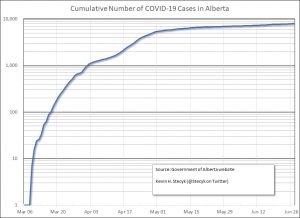I am keeping my October price forecast for West Texas intermediate oil to range between $35 and $45 per barrel for November.
Increasing COVID-19 cases throughout the world, increased production from Libya, and the upcoming US election have dominated the news recently. While increasing coronavirus cases are a definite negative, I am hoping that people take the necessary measures to help flatten the curve in the upcoming weeks and months. That said, I do expect more bad news in the next few weeks. Libya’s increased production has surprised some. When OPEC+ meets at the end of November and early December, the increased COVID-19 cases and increased Libyan production will most likely cause it to delay its tapering of planned production cuts, assuming there is agreement. The original plan was to increase production by about 2 million barrels per day starting in January. That date is likely to be pushed back. Once the US election has been decided, regardless of the outcome, investors will likely feel more comfortable making decisions with more certainty.
Regarding COVID-19, there is hope that vaccines will be available within a few months. Of course, it will take several months before vaccines are widely available to all. Albert Bourla, chief executive of Pfizer, was quoted in an online Wall Street Journal article dated October 27, 2020, “Pfizer Says Covid-19 Vaccine Late-Stage Trial Almost Fully Enrolled.”
“We have reached the last mile,” Pfizer Chief Executive Albert Bourla said on a conference with analysts discussing earnings. “Let’s all have the patience required for something so important for public health and the global economy.”
Mr. Bourla reiterated the time line he laid out earlier this month for the vaccine’s potential rollout. He said Pfizer could file for an emergency authorization to put the vaccine into initial public use in late November, assuming positive trial results—suggesting shots could be made available in the U.S. before the end of the year.
…
Mr. Bourla said that Pfizer, which is ramping up manufacturing capabilities, will be able to meet its commitment to provide 100 million doses in the U.S. by March, and to deliver about 40 million by the end of this year.
Other manufacturers, including AstraZeneca PLC, Moderna Inc., and Johnson and Johnson, are also in advanced development.
The good news is that it appears we are much closer to the end than we are to the beginning of the pandemic. When the pandemic broke out in March or April, many news reports suggested that no vaccines would be available for at least twelve-to-eighteen months. Now, we have hope that a few vaccines will be available within twelve months.
Because COVID-19 is a serious illness that can lead to serious complications and in some cases death, especially for those with compromised immune systems or advanced age, I encourage everyone to wash their hands frequently, wear a mask when in public, maintain a safe distance from others, and limit contact with others. Also, keep a record of activities and contacts over the past fourteen days, so that if you if you do fall victim to the coronavirus, you can provide contact tracers with good information. If we take those measures, then there is a greater likelihood that shutdowns will not be required.
I hope everyone remains safe and well.



Recent Comments